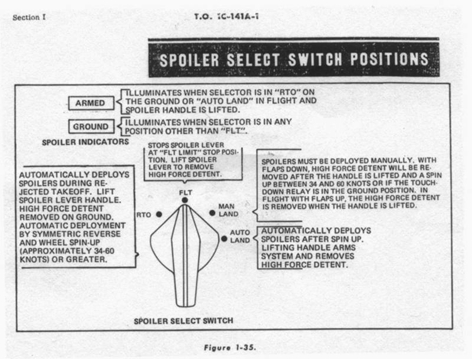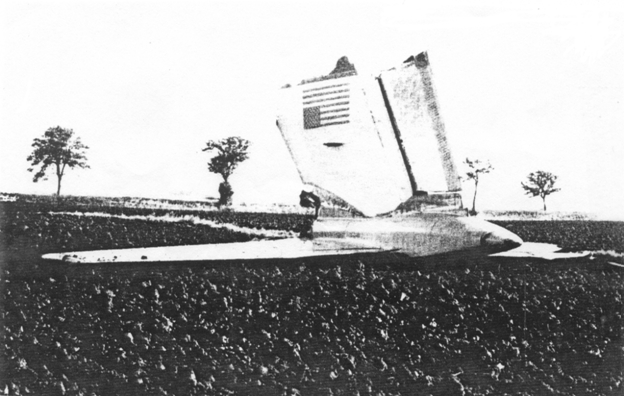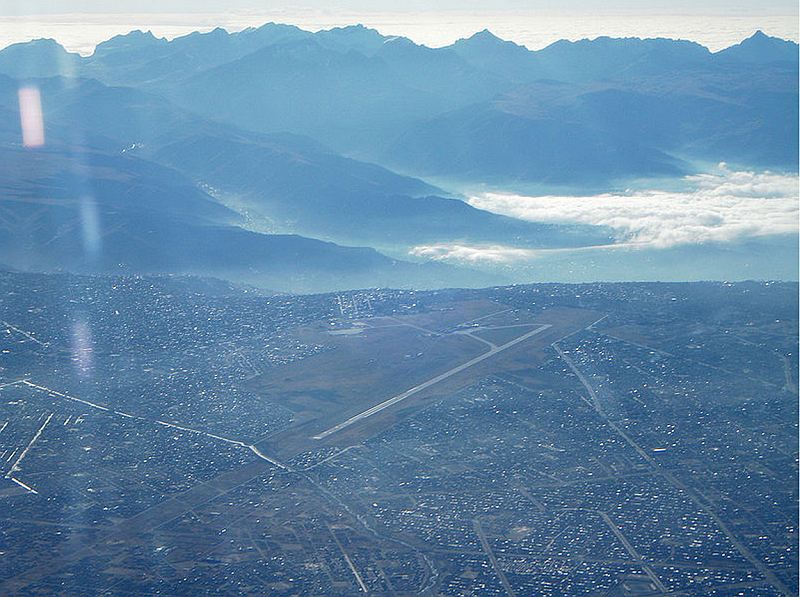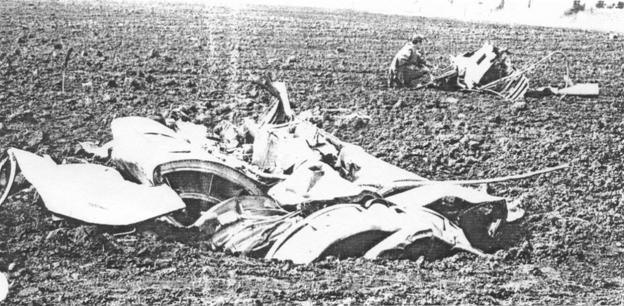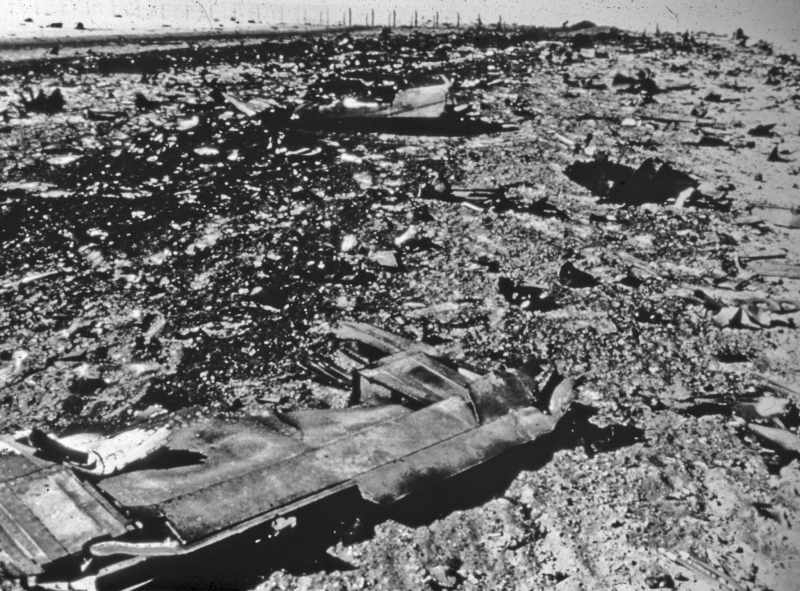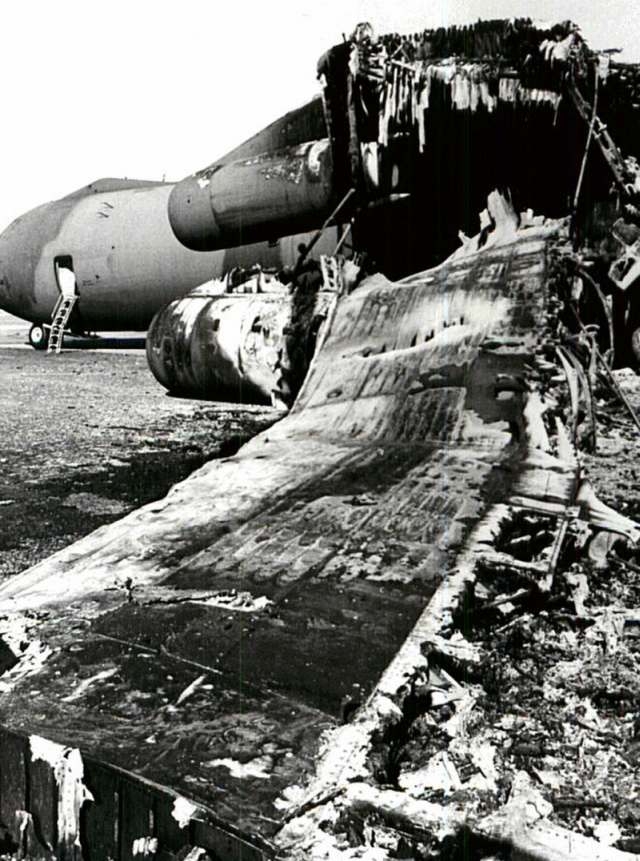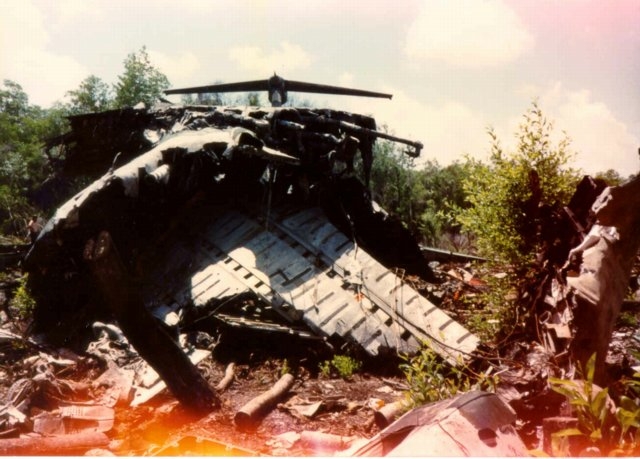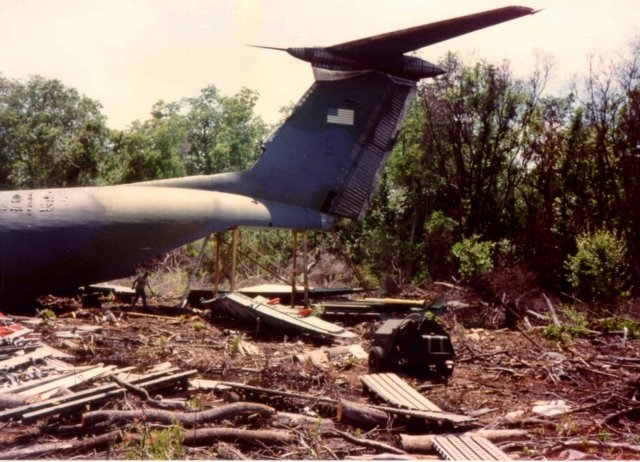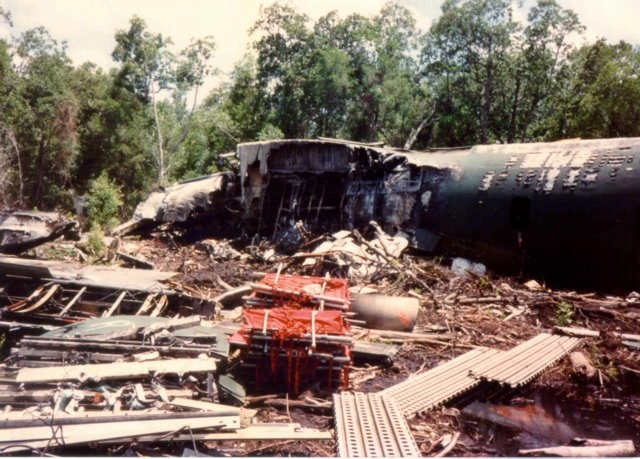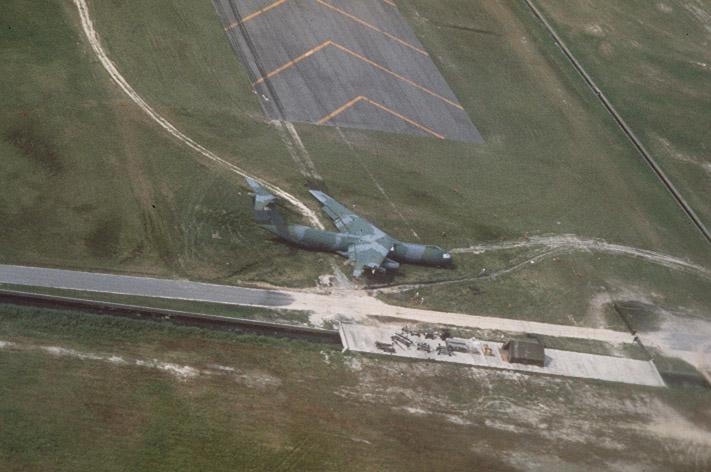Analysis of the C-141 hull-loss mishaps provides useful insight into the operational hazards that have lead to the destruction of the aircraft.
Also significant to the Starlifter mishap experience, are events that have not occurred:
| Year |
CLASS A |
CLASS B |
CLASS C (Note 1) |
HAP |
Destroyed |
| |
Number |
Rate |
Number |
Rate |
Number |
Rate |
|
(Note 2) |
| CY64 |
0 |
0 |
0 |
0 |
|
|
|
0 |
| CY65 |
0 |
0 |
0 |
0 |
|
|
|
0 |
| CY66 |
1 |
0.53 |
0 |
0 |
|
|
|
0 |
| CY67 |
4 |
0.87 |
1 |
0.22 |
|
|
|
2 |
| CY68 |
0 |
0 |
4 |
0.59 |
|
|
|
0 |
| CY69 |
0 |
0 |
1 |
0.16 |
|
|
|
0 |
| CY70 |
1 |
0.16 |
2 |
0.33 |
|
|
|
0 |
| CY71 |
1 |
0.20 |
0 |
0 |
|
|
|
0 |
| CY72 |
0 |
0 |
2 |
0.42 |
|
|
|
0 |
| CY73 |
2 |
0.55 |
0 |
0 |
|
|
|
1 |
| CY74 |
2 |
0.70 |
0 |
0 |
|
|
|
1 |
| CY75 |
4 |
1.27 |
0 |
0 |
|
|
|
1 |
| CY76 |
3 |
1.07 |
2 |
0.71 |
|
|
|
2 |
| CY77 |
2 |
0.67 |
5 |
1.67 |
|
|
|
0 |
| CY78 |
1 |
0.35 |
4 |
1.42 |
|
|
|
0 |
| CY79 |
3 |
1.03 |
4 |
1.37 |
90 |
30.9 |
103 |
1 |
| CY80 |
1 |
0.36 |
0 |
0 |
109 |
38.7 |
123 |
1 |
| CY81 |
1 |
0.35 |
1 |
0.34 |
73 |
25.1 |
66 |
0 |
| CY82 |
1 |
0.35 |
0 |
0 |
66 |
23.2 |
74 |
1 |
| CY83 |
0 |
0 |
2 |
0.68 |
77 |
26.1 |
73 |
0 |
| CY84 |
1 |
0.35 |
0 |
0 |
73 |
25.5 |
49 |
1 |
| CY85 |
1 |
0 |
0 |
0 |
70 |
23.9 |
45 |
0 |
| CY86 |
1 |
0.35 |
0 |
0 |
39 |
13.5 |
38 |
0 |
| TY87 |
1 |
0.45 |
0 |
0 |
21 |
9.5 |
59 |
0 |
| FY88 |
2 |
0 |
0 |
0 |
18 |
6.8 |
47 |
0 |
| FY89 |
1 |
0.36 |
0 |
0 |
25 |
9.0 |
25 |
1 |
| FY90 |
0 |
0 |
0 |
0 |
39 |
12.8 |
11 |
0 |
| FY91 |
0 |
0 |
0 |
0 |
42 |
9.5 |
14 |
0 |
| FY92 |
0 |
0 |
0 |
0 |
27 |
11.9 |
12 |
0 |
| FY93 |
1 |
0.49 |
0 |
0 |
23 |
11.3 |
3 |
2 |
| FY94 |
0 |
0 |
0 |
0 |
16 |
12.5 |
6 |
1 |
| FY95 |
0 |
0 |
0 |
0 |
19 |
12.1 |
5 |
0 |
| FY96 |
0 |
0 |
0 |
0 |
22 |
15.0 |
|
0 |
| FY97 |
1 |
0.83 |
1 |
0.83 |
7 |
5.7 |
|
1 |
| FY98 |
1 |
0.97 |
0 |
0 |
7 |
6.8 |
|
0 |
| FY99 |
0 |
0 |
1 |
1.13 |
|
. |
|
0 |
| FY00 |
0 |
0 |
5 |
7.74 |
|
. |
|
0 |
| FY01 |
0 |
0 |
3 |
5.79 |
|
. |
|
0 |
| FY02 |
0 |
0 |
1 |
2.28 |
|
. |
|
0 |
|
Note 1: Data for Class C Mishaps and High Accident Potential Incidents (HAP) not available prior to 1978 or after 1999.
|
|
Note 2: This is the official tabulation. For statistical analysis purposes, the AFI 91-204 counts only those aircraft destroyed in operational mishaps. Not included in this official data are the following mishaps: McChord (1966), McEntire (1982), Travis
(1986), Pope (1994) and Memphis (2001).
|


Mishap Rate Data as of FY02, except "USAF Average" which is as of FY01











"Those who cannot remember the past are condemned to repeat it."
George Santayana
SUMMARY
Originally developed as a flight safety initiative of the 728th Airlift Squadron, the purpose of this briefing has been to provide historical mishap information for the C-141 crewmember. Understanding an aircraft's mishap history is
critical to operational hazard awareness, and future flight safety. The best preventative of future mishaps is to understand the mishaps that have occurred, and awareness of the associated hazards.
The C-141 has an exemplary safety record. The fleet has logged more than 10 million flight hours. It has operated in every military operation since 1963, including Vietnam , Lebanon , Desert Storm, Panama , Grenada , and Haiti , as
well as several lesser operations. It is regularly employed in combat support and humanitarian relief missions.
Twenty-one C-141 airframes have been lost in the over thirty years of operational service. Analysis of the C-141 hull-loss mishaps indicates that the most serious threat to the aircraft has been Controlled Flight Into Terrain (CFIT).
Mission mishap factors can also affect flight safety, including IMC, night operations, and crew fatigue.
In operational service, the aircraft has experienced a multitude of mishaps short of aircraft hull-loss. When a mechanical failure has occurred, the professionalism and training of the aircrew has been the critical factor in the safe
recovery of the aircraft. It is the resourcefulness and skill of the crew that has made the difference between a major accident and a minor incident.
The mishap hazards experienced by the C-141 have not changed significantly during the career of the aircraft. Neither are the majority of hazards unique to the C-141. The mishap experience of the Starlifter closely parallels the experience
of other similar aircraft, both military and civilian. Knowledge of these hazards will improve the crewmember awareness and ability to successfully deal with them. It is to that end this briefing was developed.
Author's Note: The above accidents and incidents have been extensively researched using public documents and personal accounts. Unfortunately Air Force Safety Office policy excluded the use of the official accident reports from
this briefing. Hence factual errors may exist in the accident narratives. The author has made every attempt to ensure the accuracy of this briefing. In many cases, however, details are hazy or lost to time. The author is interested
in any published information or first-hand information that readers could provide about these or of other incidents that might deserve inclusion in this briefing.
In Memoriam
The following aircrew and maintenance personnel lost their lives in C-141 Hull-Loss mishaps. This is not an official list. Data was compiled from published public sources.
Arensman, Harold D
Arnold, Peter J
Babcock, Edward P
Bass, Charlie J
Bialke, Glenn F
Bissett, Monte
Blackley, John H
Brenn, Harry M
Brissette, Leslie C
Brown III, Wilbert
Brown, Marshall E
Bryant, Stacy D
Bucknam,Gary
Bums, Ralph W
Burkhart, Kenneth M
Burroughs, Paul N
Bynum, Alanson G
Campton, James R
Canter, Billy J
Chambers, Mark J
Church, Carl H
Cindrich, Gregory M
Cleven, Richard M
Corbin, Clinton C
Corona, Alessandro
Craig, Scott D
Dasenbrock, John H
Dempsey, Harry R
Dietz, Thomas R
Down, Robert E
Drager, Justin R
Eigenrauch, Robert A
Elster, Mark
Evans, Earl R
Evans, Robert K
Eve, Frank N
Funck, Alfied
Gardner, Darnell
Gaskin, Robert D
Gentry, Ralph R
Gist, Allan W
Gorin, Joseph M
Grapperhus, Stephen A
Grubbs, Ronald D
Haberbush, Glenn K
Hale, Harold L
Harer, David L
Hillsman, Sidney N
Hirschi, Bradford B
Hodge, Michael K
Homer, Leroy - Former McGuire C-141 pilot, was FIRST OFFICER on Flight 93, 9/11/2001
Hoye, Lonnie G
Hoyle 3rd, Edward
Huggins, Wayne R
Jenkins, Jimmy L
Johnson, Dale C
Kerr, Norman T
Kightlinger, James M
Kohler, Karl M
Kuechman, Thomas H
Kuhn, William A
Lake, Dale W
Lamers, Friedrich H
Lee, Stanley Y
Leonard, Leroy R
Lynch, David A
Mahy, Harold E
Martin, William G
McGany, Robert J
McGuire, Kevin
McNally, John R
McNeilly, Elmer A
Meeks, Robert M
Miller, Herman E
Miyoshi, Terrence
Moorefield Jr, CT
Moreland, George
Nicholson, Monty G W
Norman, James L
Osterfeld, Peter
Parent Jr, Edward
Payne, Edwin C
Payne, Gary T
Peer,Garland B
Perez, Carlos M
Quinn, Patrick F
Ramsey, Jason S
Remerscheid, John W
Rivera, Refugio
Roberts, Scott N
Shults, Roy E
Sielewicz, David
Simpson, James E
Solomon, Michael N
Starkel, Max P
Sullivan, Leo D
Sweatman, Jack C
Thornton, Richard B
Vallejo, Peter C
Vanarsdall, Daniel
Vargas, Gaston J
Walker, Franklin L
Welch, Patrick A
Wells, Donald R
Wilkenson, Banks
Williams, Glenn R
Wilson, Alan L
Wilson, Jeffrey T
Witt, Morris B
Wright, Robert E
Young, David
Young, John F
Mishap Classification
"Flying the Heavies",
Flying Safety Magazine, Dec. 1994, p. 7
AFI 91-204, Safety Investigations and Reports, 29 November 1999, pp. 28-38, 42-46, 87-88
Operational History
"More Mods for the Starlifter",
The MAC Flyer, May 1983, pp. 20-23
United States Military Aircraft, Since 1909, Gordon Swanborough, Peter Bowers, 1989, pp. 399-400
"F-16 Year in Review",
Flying Safety Magazine, Jan. 1995, p. 16
"Providing America's Global Reach",
Flying Safety Magazine, Feb./Mar. 1996, pp. 7-10
McChord/1966
"2 Killed, 4 hurt as McChord Starlifter Explodes, Burns",
News Tribune, Tacoma WA , Sept. 7, 1966, pp. A1-2
"Fire Victims Identified By Air Force",
News Tribune, Tacoma WA , Sept. 8, 1966, pp. A-12
Cover
The MAC Flyer, Mar. 1967,
"1966 Accident Review",
The MAC Flyer, Mar. 1967, pp. 12-13
Photo Credit: USAF Photo
Da Nang/1967
"5 Tacomans on C-141 Die in VN Collision, Fire",
News Tribune, Tacoma WA , Mar. 23, 1967, pp. A1-2
"McChord Plane Destroyed",
News Tribune, Tacoma WA , Mar. 23, 1967, p. A1
"The 1967 Aircraft Accident Review",
The MAC Flyer, Mar. 1968, p. 5
Da Nang Vietnam, 11-1,
Jeppesen Sanderson Inc, 4 Jul. 1997
Photo Credit: Unknown
Cam Rahn Bay/1967
"7 Missing in VN Crash of Starlifter",
News Tribune, Tacoma Apr. 13, 1967, p. A-1
"Bodies of 3 More C-141 Victims Found", News Tribune, Tacoma WA , Apr. 15, 1967, p.A-2
"The 1967 Aircraft Accident Review",
The MAC Flyer, Mar. 1868, p. 6
T.O. 1C-141A, p. 1-108
Torrejon/1973
"24 Listed Killed on Air Force Jet",
Asbury Park Evening Press, Asbury Park NJ , 8 Aug. 29, 1973
"Solo Un Superviviente",
Arriba, Madrid Spain, Aug. 30, 1973, pp. 1-2
"La noche de los 24 muertos",
La City Actuslidad, Madrid Spain AUG 30, 1973, pp. 2-3
Cover,
McGuire AirTides, Aug. 31 1973
"Air Force Probes C-141 Tragedy",
The Leader, Sept. 6, 1973, p. 13
"Accident Rates for 1973",
The MAC Flyer, Mar. 1974, p. 11
"The Final Error",
The MAC Flyer, Mar. 1974, pp. 16-18
"Conspiracy for Disaster",
The MAC Flyer, June 1976, pp. 9-11
"Communication-Your Life May Depend on It"
The MAC Flyer
"Military Aviation Disasters", Gero, David, Patrick Stephens Ltd, Haynes Pub., Newburg Park, CA, 1999, p. 113-4
LaPaz/1974
437 MAW History, Chap. 6, 1974, pp. 59-62
"The Secret of Cordillera Real ", The MAC Flyer, Mar. 1975, pp. 18-20
McChord/1975
"McChord plane, 16 aboard, crashes", The Seattle Times, Seattle WA , Mar. 21, 75, p. A1
"Air-Control mistake sent 16 to icy death", News Tribune , Tacoma WA , Mar. 24, 75, p. A1
"C-141 crash left seven widows", News Tribune, Tacoma WA , Mar. 24, 75, p. A1
"Wrong Orders may have Doomed Jet", The Seattle Times, Seattle WA , Mar. 24, 75, p. A1
"Fatal Message: ' Maintain 5,000'", The Seattle Times, Seattle WA , Mar. 25, 75, p. A4
"Out of Ten for Five", The MAC Flyer, Aug. 75, pp. 8-9
"Risk Awareness or Blind Faith", The MAC Flyer, Nov. 79, pp. 18-21
"Let's Hear it for the Heavies", Flying Safety Magazine, Nov. 83, p. 10
"Mountain ministry honors fallen airmen, sailors", Northwest Airlifter, McChord AFB WA, 6/10/2000, p.11
"Military Aviation Disasters", Gero, David, Patrick Stephens Ltd, Haynes Pub., Newburg Park, CA, 1999, p. 116
Map Credit:
The Seattle Times
Photo Credit:Unknown
Mildenhall & Sondestrom/1976
"Officials Rule Out Sabotage In Two Fatal Air Disasters", New York Daily News, New York , Aug. 29, 76
"Two Air Force Jet Crashes Kill 39", Daily Record, Morristown NJ , Aug. 29,76
"2 McGuire Jets Crash, Killing 39", Bulletin , Philadelphia PA , Aug. 29, 76
"McGuire takeoff times weren't minutes apart", Sunday Times Advertiser, Trenton, NJ
"Air Force plane crashes kill 2 Bergen men", Hudson Dispatch, Union City NJ ,Aug. 29, 76
"McGuire AFB slates memorial services for crash victims", Courier-Post Dispatch, Camden NJ, Aug. 31, 76
"Rites held for 11 in air crash", Jersey Journal , Jersey City, NJ, Sept. 1,76
"Memorial set for airmen", Hudson Dispatch, Union City NJ, Sept. 1,76
"Air Force to mourn victims", Star Ledger, Newark NJ, Sept. 1, 76
"McGuire goes about business, but remembers victims", Inquirer, Philadelphia, PA , Sept. 2, 76
"From the 438th Wing Commander", McGuire AirTides, Sept. 3, 76, p. 3
Cover photo, The MAC Flyer, Nov. 76
"Fire and Rain", The MAC Flyer, Dec. 76, pp. 13-15
"Illusion of Danger", The MAC Flyer, Jan. 77, pp. 8-9
"Accident Statistics for 1976", The MAC Flyer, Apr. 77, pp. 20-21
"Detour T-Storms", Aerospace Safety Magazine, May 77, p. 12
"DEJA VU-Sondrestrom", The MAC Flyer, Sept. 77, p. 23
Aerodrome/Facility Directory, US Government Printing Office, p. B212
Sondrestromfjord 19-02, 19-03, Jeppesen Sanderson Inc.
Military Aviation Disasters, Gero, David, Patrick Stephens Ltd, Haynes Pub., Newburg Park, CA, 1999, p. 121-2
Photo Credits: Unknown
Charleston/1979
437 MAW History, Chap. 6, 1979, pp. 78-81
"Accident Statistics for 1979", The MAC Flyer, Apr. 80, p. 9
Cairo West/1980
"McChord crew killed in Egypt plane crash", Seattle Times, 11 Nov. 13, 80
"6 local airmen killed in crash", News Tribune, Tacoma WA , Nov. 13, 80, p. A1
"Egypt pins fatal U.S. crash on mechanical problems", Seattle Times Nov. 14, 80, p. A10
"C-141 Crash Kills 13 in 'Bright Star'", Air Force Times, Nov. 24, 80, p. 4
"1980 Mishap Statistics", The MAC Flyer, April 81, pp. 8-10
Military Aviation Disasters, Gero, David, Patrick Stephens Ltd, Haynes Pub., Newburg Park, CA, 1999, p. 128-9
McEntire/1982
Fire Destroys Stretched C-141", Air Force Times, Mar. 22, 82, p. 4
Recollection of Author
Knoxville/1982
"1980 Mishap Statistics", The MAC Flyer, Apr. 81, p. 10
"Missing Plane Found; No Survivors Reported", New York Times, New York Sept. 1, 1982
"Crash in Tennessee Kills Nine; Other Accidents Take Two Lives", Air Force Times, Sept. 13, 1982, p. 4
"Sadly, MAC Flight Mishaps Continue to Rise", The MAC Flyer, p. 31
437 MAW History, Chapter 6, 1982, pp. 73-76a
"C-141", Flying Safety Magazine, May 83, p. 12
'
Map Credit: 437 MAW
Sigonella/1984
"9 Killed in Crash of U.S. Plane", Washington Post, Washington DC , July 13, 1984, p. A23
"U.S. Air Force C-141 transport plane crashes in Sicily; all nine abroad killed", San Bernardino Sun, San Bernardino CA , July 14, 1984
"C-141", Flying Safety Magazine, Apr. 85, pp. 18-19
Travis/1986
Interview with the mishap Aircraft Commander
"The Way it's Done", The MAC Flyer, Sept. 89, pp. 24-26
' Photo Credit: Unknown
Hurlburt/1987
"Crew identified in crash of Norton C-141B", Press-Enterprise, Riverside CA , Feb. 22, 1989, p. B20
"Bodies of 6 crash victims recovered", Press-Enterprise, Riverside CA , Feb. 23, 1989, p. B2
"Air Force finds 6 of 8 bodies in crash", San Bernardino Sun, San Bernardino Feb. 23, 1989
"Bad weather linked to crash of Starlifter", Press-Enterprise, Riverside CA , Feb. 24, 1989, p. B8
"C-141 crashes during storm in swamp near Hurlburt", Air Force Times, Mar. 6, 1989, p. 10
Photo Credit: Associated Press
Harlem/1992
Interview with crew members from aircraft #3 and #4
"2 Jet Crash Victims were from State", Seattle Times, Seattle WA , Dec. 2, 1992, p. A1
"Ceremony at McChord Salutes 13 Dead Airmen",
Seattle Times, Seattle WA , Dec. 4, 92, p. A1
"C-141, B-1 flights continue despite fatal accidents", Air Force Times, Dec. 14, 1992, p. 10
Gero, David, Military Aviation Disasters, Patrick Stephens Ltd, Haynes Pub., Newburg Park, CA, 1999, p. 157-8
Photo Credit: USAF Photo
Travis/1993
"Cargo plane burns in California", Arizona Republic , Phoenix AZ , Oct. 8, 1993, p. A10
"Cargo Jet burns at Travis before training Mission", San Francisco Chronicle, San Francisco CA ,Oct. 8, 1993
Pope/1994
Carolina AF Base Midair Crash Kills 16", Los Angeles Times, Los Angeles CA ,Mar. 24, 1994, p. A15
"15 Killed by skidding Jet after collision", Seattle Times, Seattle WA Mar. 24, 1994, p. A3
"15 Killed, 91 Injured by Skidding Jet", Seattle Times, Seattle WA , Mar. 24, 1994, p. A3
"G.I. Death toll at 20 in Air Base Crash", New York Times, New York, Mar. 25, 1994, p. 14
"AF Base Survivor: 'Fire was Everywhere '", Los Angeles Times, Los Angeles CA , Mar. 25, 1994, p. A23
"Heroes emerged in Fiery Tragedy at Air Force Base", Seattle Times, Seattle WA , Mar. 25, 1994, p. A12
"A U.S. Air Force F-16D" Aviation Week & space Technology, , Mar. 28, 1994, p. 17
"Did aircraft mix overburden Pope?", >Air Force Times, Apr. 11, 1994, p. 10
"Did volatile fuel take Pope lives?", Air Force Times, Apr. 18, 1994,
"Collision of AF Jet, Cargo Plane Blamed on Controller Mistakes", Los Angeles Times, Los Angeles CA , June 22, 1994, p. A-13
"Flying the Heavies" Flying Safety Magazine, Dec. 94, p 6
Military Aviation Disasters Gero, David, , Patrick Stephens Ltd, Haynes Pub., Newburg Park, CA, 1999, p. 159
Photo Credits: USAF Photo
Photo Credit: Associated Press/Fayetteville Observer-Times
Near Namibia Africa/1997
"Germany and the US lose Planes Off Africa", New York Times, New York NY , Sept. 15, 1997, p. A3
"Nine missing after C-141 disappears over Atlantic Ocean", AMC Press Release, Sept. 15, 1997
"Search continues for missing C-141", AMC Press Release, Sept. 15, 1997
"Mobility Task Force supports search-and-rescue efforts for missing C-141", AMC Press Release, Sept. 15, 1997
"Task Force supports C-141 search, rescue efforts", AMC Press Release, Sept. 15, 1997
"Debris Off Africa Is Linked To U.S. and German Planes", New York Times, New York NY , Sept. 16, 1997, p. A8
"Part of C-141 wing recovered in South Atlantic ", AMC Press Release, Sept. 16, 1997
"Confusion over mid-air smash", The Namibian, City Windhoek Namibia, Sept. 16, 1997
DOD News Briefing, Sept. 16, 1997
"Namibian boats lead search bid", The Namibian, Windhoek Namibia, Sept. 17, 1997
"Namibia denies air smash responsibility", The Namibian, Windhoek Namibia, Sept. 18, 1997
"German, US Aircraft Crash off African Coast ", Aviation Week, Sept. 22, 1997, p. 31
"Tupolev was flying at 'wrong height '", The Namibian, Windhoek Namibia, Sept. 23, 1997, p. 1
"Angola clams up on crash inquiry", The Namibian, Windhoek Namibia, Sept. 24, 1997
"Probe team listen to Angolan Tapes", The Namibian, Windhoek Namibia, Sept. 25, 1997
"One Review of C-141 Crash Ends", Air Force Times, Nov. 3, 1997, p. 2
"Germans Study Flight Recorder", Air Force Times, Dec. 22, 1997, p. 2
' "Kross: Fatal Crash Was Avoidable", Air Force Times, Mar. 23, 1998, p. 2
"USAF Cites Faulty Altitude As Cause of Africa Midair Crash",' Aviation Week, Apr. 6, 1998, p. 59
"C-141 Crew is Cleared", Air Force Times, Apr. 13, 1998, p. 27
"Out of Africa ", Aviation Week, Apr. 13, 1998, p. 23
Military Aviation Disasters, Gero, David, Patrick Stephens Ltd, Haynes Pub., Newburg Park, CA, 1999, pp. 170-1
Memphis/2001
"Air Force Grounds Fleet of C-141s", The Commercial Appeal, Memphis, TN , Dec. 23, 2001, p B1
"Air Force Grounds C-141 jet fleet",
CNN.com, Dec. 24, 2001, at CNN Web site
"C-141s Flying Again After Wing Mishap", The Commercial Appeal, Memphis, Dec 25, 2001, p. B1
"Briefly", The Commercial Appeal, Memphis, TN , Dec. 28, 2001, p. B32
"World News Roundup", Aviation Week, Jan. 7, 2002, p. 18
"C-141 Wing Mishap a Unique Event", Air Force Times, Jan. 7, 2002, p. 5
"Stretched to the Limit", Air Force Times, May 20, 2002, p 3, 12
Photo Credits: USAF Photos
Wake Island/1967
Interview with mishap aircraft's Crew Chief
"The 1967 Aircraft Accident Review", The MAC Flyer, Mar. 1968, pp. 4-5
Bien Hoa/1970
"Hijacked", 446 AW Associate Press, Dec. 1991-Jan. 1992, pp. 1,8
Richmond/1977
Interview with mishap crew members
"Good Show", The MAC Flyer, Feb. 1978, p. 23
Cover, The MAC Flyer, Mar. 1978
"A Long Ten Minutes", The MAC Flyer, Mar. 1978, pp. 4-6
"Accident Statistics for 1977", The MAC Flyer, Apr. 1978, pp. 4-5
"A Mayday in October", Airman Magazine, Sept. 1978, pp. 5-8
Interview with incident crew members
"Dutch Roller Coaster", The MAC Flyer, Mar. 1977, pp. 17-19
"Let's Hear It For The Heavies", Flying Safety Magazine, Nov. 1983, pp. 9-10
Photo Credit: USAF Photo
China Lake/1978
Interview with mishap crew members
"Keep Your Guard Up", The MAC Flyer, Feb. 1980, p. 23
McMurdo/1979
"How to Plan a Crash Landing",The MAC Flyer, Feb. 1980, pp. 8-10
"MAC Safety Awards For Excellence in Airmanship", The MAC Flyer, July 1980, p. 18
Lajes/1981
"Six Short Rings at Lajes", The MAC Flyer, Oct. 1981, pp. 4-5
"Excellence in Airmanship", The MAC Flyer, Feb. 1982, p. 10
"1981 Mishap Statistics", The MAC Flyer, Apr. 1982, pp. 8-10
"Excellence in Airmanship", The MAC Flyer, Sept. 1983, pp. 22-23
Photo Credits: USAF Photos
Vance/1982
"Smoke(ing) Mask", The MAC Flyer, Jan. 83, p 30
"C-141", Flying Safety Magazine, May 83, pp. 14-15
Amarillo/1983
Interview with mishap Aircraft Commander
"Accident Statistics for 1979",' The MAC Flyer, Apr. 1980, pp. 8-10
Iwakuni/1987
Interview with squadron crew members
"Norton-based cargo plane damaged in snow landing", The Press-Enterprise, Riverside CA , Jan. 14, 1987, p. B7
"Remote crash site hampers searchers", Air Force Times, p. 33
"The Way it's Done", The MAC Flyer, Sept. 1989, pp. 24-26
Photo Credits: Unknown
N'Djamena, Chad/1987
Interview with mishap Aircraft Commander
"Chad Says Troops are Razing Base Captured in Libya ", New York Times, New York NY , Sept. 7, 1987, p. A1
"Libyan Warplane is Downed in Chad by French Forces", New York Times, New York NY , Sept. 8, 1987, p. A1
"Libyan Plane Shot Down by French", Los Angeles Times, Los Angeles CA , Sept. 8, 1987, p. A7
"Chad , Libya Accept Truce Under OAU Sponsorship", Los Angeles Times, Los Angeles CA , Sept. 11, 1987, p. A1
"Chad and Libya in Pact but Clash Anew", New York Times,New York, NY , Sept. 12, 1987, p. A3
FLIP General Planning, US Government Printing Office, 1998
Goose Bay/1990
Interview with mishap Flight Engineer
Sarajevo/1994
Interview with mishap Aircraft Commander
"Airlifters under attack", Air Force Times, Aug. 8, 1994, p. 18
"Excellence in Airmanship", Mobility Forum, Mar.-Apr. 1995, pp. 32-33
Thessoloniki/1995
Interview with incident crew members
"Double Jeopardy", 446 AW Associate Press, Dec. 1995, p. 4-5
"Aircrew wins 15th Air Force Aircrew Excellence Award", 446 AW Associate Press, Mar. 1996, p. 4
"Flying the Heavies", Flying Safety Magazine, Dec. 1994, pp. 4-9
"F-16 Year in Review", Flying Safety Magazine, Jan. 1995, p. 16
"Providing America's Global Reach", ' Flying Safety Magazine, Feb. 1996, pp. 7-10
"Statistics'C-141", Flying Safety Magazine, Dec. 1997- Jan. 1992, p. 18
"C-5/C-17/C-141", Flying Safety Magazine, Dec. 1997- Jan. 1998, p. 6
"The Stratlifters", Flying Safety Magazine, Jan.- Feb. 2000, p. 6-9
Magazine,"FY99 Stats" Flying Safety , Jan/Feb 2002, pp. 20-29
"The Strategic Airlifters", Flying Safety Magazine, Jan/Feb 2002, pp. 30-33
"FY01 Mishap Stats", Flying Safety Magazine, Jan/Feb 2002, pp. 20-29
Special Thanks to Robert Crouse, MSGT USAF (Ret), and George Graham, MSGT USAF (Ret), for assistance with aspects of this document.
Click here for C141Heaven Home Page



